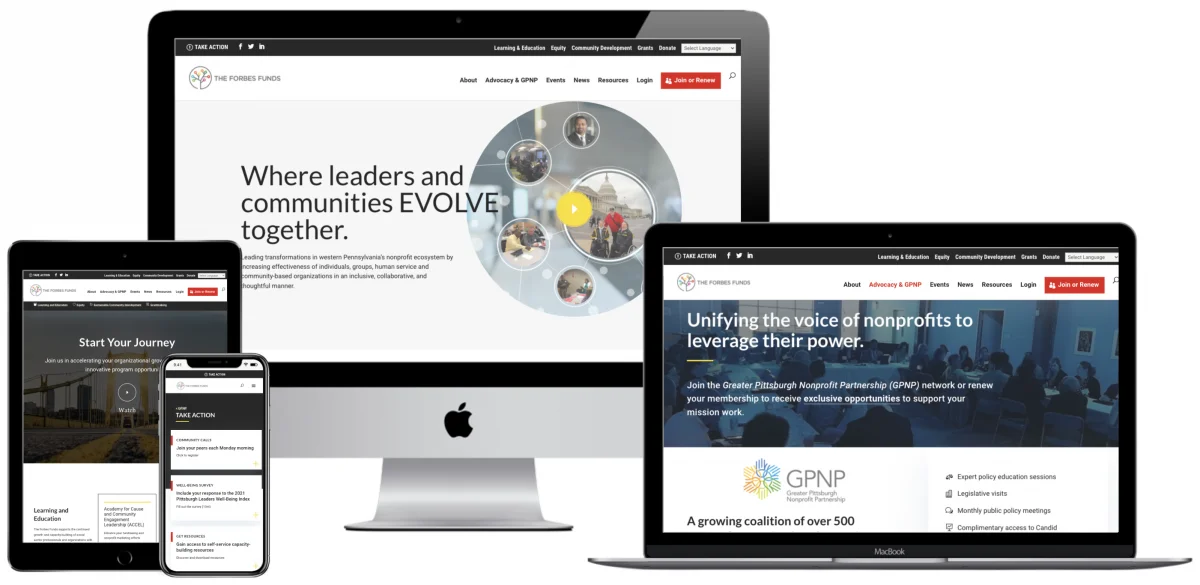As a writer in a creative human-centered web design and development agency, the prospect of AI becoming “as good as” humans is slightly terrifying. To me, I don’t want to see the entire internet written by ChatGPT, Google Bard, or any number of manifestations; however, instead of gathering pitchforks, it’s best to look at AI as a kind of buddy that can unlock human potential, boost productivity, and streamline workflow.
Here’s what AI can do for your business – writing aside. Let’s explore how AI technologies are revolutionizing work processes, enhancing efficiency, and unleashing the full potential of human talent.
Automation and repetitive tasks
AI-driven automation tools can liberate employees from mundane, repetitive tasks that consume valuable time and resources. By delegating these tasks to AI systems, workers can redirect their focus and energy toward more creative, strategic, and value-added activities – and this has already been successfully implemented for some using robotic process automation (or RBA). This freedom not only enhances job satisfaction but also results in increased productivity.
Have some paid intern (or worse a volunteer) doing all your data entry and extraction? Well, now AI can do that. When I was an intern at a medical center in Georgia, I remember having the fun task of removing all of the “deceased” people from the medical system that was sort of stuck in 1980s MS-DOS level. I bet AI can do that now!
Many companies have already been successful at reducing the volume of queries for customer service agents with chatbots and virtual assistants, meaning that some routine enquiries are filtered out so your agents can focus on the most important queries that do require human thought and creative solutions.
I hesitate to add this one (hehe!) but AI can create routine content creation. You can ask AI to “simplify” complex text, change it to bullet points, write social media messages, and all sorts. You can even write blog posts but I’m biased and think that creates some very wooden content (for now) until the AI becomes significantly smarter – which it will. But you can create content and then edit it and add your own flare and it will save time.
Here’s a non-exhaustive list of all the ways AI can be used to automate tasks, allowing your admin staff to focus on the more important (and less boring) jobs: data entry and extraction; customer support and chatbots; email sorting and filtering; text summarization and generation; appointment scheduling; social media management; inventory management; financial transactions; data analysis and reporting; quality control and inspection; language translation; image and video processing; virtual assistance; medical diagnosis; search and recommendation; security and fraud detection; language processing and natural language understanding; and routine legal research.
The best thing is that human brains often wander when set these tasks because they’re inherently uninteresting, which can lead to humans making mistakes (we’re only human after all) but with AI there will be zero mistakes. Everything will be entered accurately the first time which means no problems to identify down the line. Then your human employees are free to focus on the tasks that engage them and make them happy at work – also leading to better job satisfaction. Your organization is unlocking even more potential than it could before because engaged employees translate to more profits or budget (for nonprofits) – as explained in this Forbes article.
Data analysis and decision support
AI empowers organizations to make data-driven decisions with unprecedented speed and accuracy. Machine learning algorithms can analyze vast datasets, identify patterns, and provide insights that would be impossible for humans to discern in a reasonable timeframe. This capability enhances decision-making across industries, from healthcare to finance to marketing – and is even useful for nonprofits.
Even though AI can identify patterns in data sets, as an example, it still needs a knowledgeable person to interpret the “so what?” of the data which is where the human brain comes in. AI can provide all the information you need to make informed business decisions or identify areas of improvement – whatever you need to analyze and interpret really.
Examples of ways AI can analyze data include predictive analytics for forecasting demand, reducing waste, and optimizing resources; fraud detection systems that identify suspicious activities in real-time; personalized recommendations and content curation based on user preferences; and so much more! AI is the tool to collate your data and your talented workforce can extrapolate that data much faster than with human processing alone.
Enhanced customer engagement
AI-driven chatbots and virtual assistants have transformed the way businesses interact with customers. These systems provide immediate responses, 24/7 availability, and personalized experiences, resulting in higher customer satisfaction and loyalty. Of course, we’ve all had that funny experience when ringing your bank (or some such) and the automated Siri/Alexa-like voice goes, “I’m sorry but I’m having trouble understanding you. Please key in…” But, overall, these systems help customers with routine enquiries get answers faster and the more complex cases can be handled by a human. Jokes aside, studies do show that over 80% of customers like chatbots, as one example.
Moreover, AI algorithms can analyze customer data to tailor marketing efforts and products to individual preferences. Once your customers have consented to sharing their data via the California Consumer Privacy Act (CCPA) in the US or the General Data Protection Regulation (GDPA) in the UK and Europe, then you can use that data to help tailor your services and products to their needs with personal email marketing campaigns based on user behavior or even an overarching “sentiment analysis” to gauge customer feedback on social media, as examples.
The takeaways
Artificial intelligence is not out there to replace humans – thankfully, or what’s the point? We don’t want a world with computers talking to each other back and forth like some kind of alternate Hitchhiker’s Guide to the Galaxy reality. AI can be used to enhance human capability by liberating them from routine tasks allowing organizations to do more than ever before. AI will evolve, and play a role in shaping the future of work as well as productivity across diverse industries.
Whereas in the past industries like weaving and coal mining were impacted by mechanization and globalization, respectively, with AI, humans will always be part of the equation. Humans will still be needed to complete jobs that require creativity, strategizing, and empathizing – but with fewer manual, repetitive tasks without human error or distraction. However, companies may need to upskill and reskill employees to fill knowledge gaps as roles evolve (but that’s a topic for another day). The current equation with AI is this: potential and productivity unlocked.
Get in touch with Key Medium to find out how you can get started.

Elaine Frieman holds a Master’s Degree and is a UK-based professional editor, educational writer, and former marketing agency content writer where she wrote articles for disparate clients using SEO best practice. She enjoys reading, writing, walking in the countryside, traveling, spending time with other people’s cats, and going for afternoon tea.

